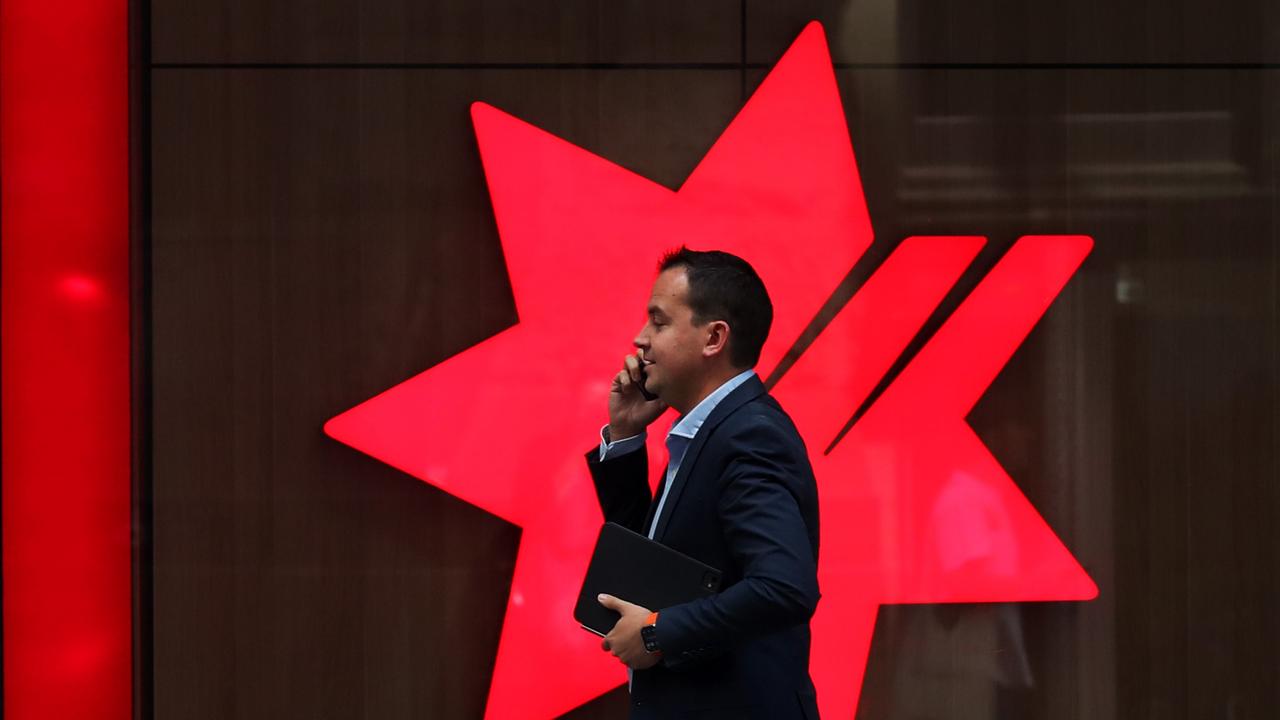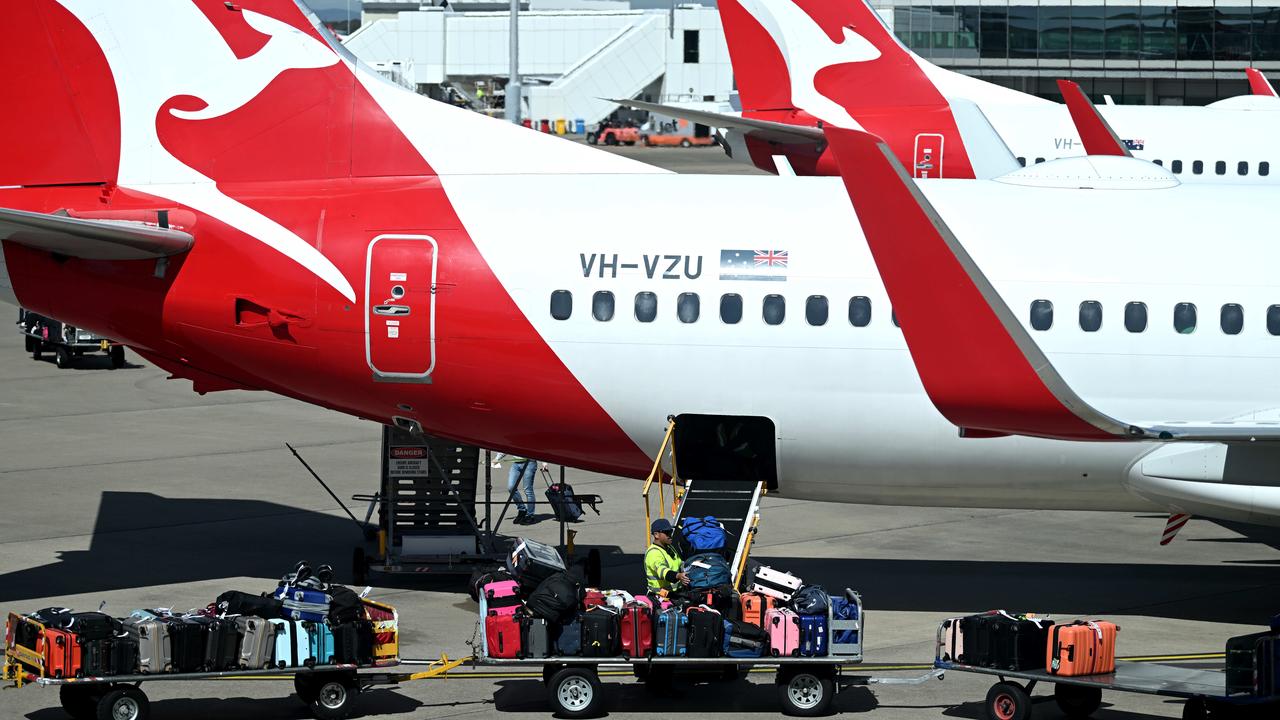RBA likely to cut but the uncertain economic outlook means investors may be subdued in their response
The Reserve Bank is widely tipped to move the cash rate but a noncommittal narrative may ‘challenge’ any expected sharemarket exuberance, according to Morgan Stanley’s Chris Nicol.

Business
Don't miss out on the headlines from Business. Followed categories will be added to My News.
The Reserve Bank is widely expected to cut interest rates on Tuesday but a positive reaction from the stock market is far from guaranteed after exceptionally strong gains in recent weeks.
Expectations of interest rate cuts this year helped push the local stock market up to a record high in mid February.
But after the RBA last cut interest rates the following week, the local sharemarket fell as much as 16 per cent over the next seven weeks due to the US-instigated trade war.
A 16 per cent rebound in the ASX 200 index over the past six weeks came as the trade war abated significantly. This was in response to US President Donald Trump announcing a 90-day pause on reciprocal tariffs on most nations and the US and China agreeing to slash the tariffs imposed on each other for an initial period of 90 days – effectively lowering US-China tariffs to levels that prevailed before a tit-for-tat escalation.
But the US stock market is clearly vulnerable after its own rebound of 23 per cent in the past six weeks, including a 5.3 per cent rise last week on the US-China “deal”.
Investors are too complacent about the ability of the US to make trade deals that achieve a 10 per cent base tariff on most nations and no more than 30 per cent on China, according to NAB.

“Were that to be the case, and they don’t resolve those 20 per cent fentanyl-related related tariffs … we’ll still end up with US tariffs on China of more than 40 per cent and that will still have significant inflation and economic growth implications,” NAB head of foreign exchange strategy Ray Attrill said.
“So again, the confidence that the US economy is going to weather this is still very open to question.”
Demonstrating that vulnerability, US stock index futures fell sharply in Monday’s APAC trading in response to news late Friday of Moody’s cutting the US sovereign credit rating to Aa1 from Aaa, matching previous S&P and Fitch actions; the former dating back to the debt ceiling crisis of 2011.
Moody’s said that while it recognised the US’ significant economic and financial strengths, these “no longer fully counterbalance the decline in fiscal metrics”. It expected federal deficits to widen to almost 9 per cent of GDP by 2035, up from 6.4 per cent last year, due to increased interest payments on debt, entitlement spending and “relatively low revenue generation”.
Mr Attrill said Moody’s actions would have no effect on any investor’s ability or willingness to continue holding US Treasuries; that would likely require downgrades of four or five more notches before anyone was at risk of breaching a mandate.
“It is very much a lagging indicator and I think more importantly, its significance is approximately zero,” he said.
But as much as it was a catch-up move to other credit rating agencies that won’t force any investors to sell US Treasuries or preclude them from buying, S&P 500 futures were down 0.9 per cent in APAC trading, suggesting that a reality check was overdue.
Australia’s ASX 200 index ended an eight-day winning streak, falling 0.7 per cent to 8289.2.
As for the RBA meeting, while market pricing of 80 basis points of cuts over the next 12 months is linked to global policy and growth uncertainty, the latest domestic data have been strong enough to question the amount of rate cuts that have been priced in, according to Morgan Stanley.

A noncommittal narrative from the RBA may at least “challenge” sharemarket leadership.
“Expectations for further easing have strengthened over the last month as global market volatility and genuine growth concerns seemingly allowed an ultimate path to neutral for our central bank,” Morgan Stanley equity strategist Chris Nicol said.
“Positioning in the equity market was clearly influenced, with retailers, banks and residential property developers showing strong outperformance.
“The rub here becomes linked to recent domestic data – wages and jobs in particular – that in isolation raise debate on path and terminal values.”
In his view the post-statement narrative from the RBA could be “noncommittal or even outright hawkish”. That may cause some disappointment on the part of consumers and mortgagees, and potentially some “give-back” in interest rate-sensitive sectors on the stock market.
After a somewhat tumultuous month for global trade policies and financial markets, these are likely to get more emphasis from the central bank and potentially lead it to trim its growth forecasts.
However, after the wage price index showed a re-acceleration of wage growth and labour force data showed unemployment remained well below RBA estimates of NAIRU – the non-accelerating inflation rate of unemployment – the RBA may again be circumspect on the chance of further easing.
“In our view, this will not be enough to challenge a May cut, but it makes the statement signal and subsequent presser narrative quite important for positioning in equities,” Mr Nicol said.
“Consumers and mortgagees have been told by the media, their bank, and probably their taxi driver that rates are coming down – a lot.
“ASX Investors, worried about offshore exposures, have crowded domestic-focused equities and leaned into the comfort that a combined fiscal and monetary buffer provides to the outlook.
“Our view on the RBA this week is for a noncommittal cut.
“We still see further easing this year but are on alert for how the path could be tempered.”
The issue for equities is that an “all-in buy-in”, partly linked to expectations of easier policy, has lifted the overall market but particularly the retailers, banks, residential property developers.
CBA shares rose 1.0 per cent to a fresh record high close of $171.36 on Monday.
“Our sector team’s views on the importance and impact of rate cuts shows a strong sense that for animal spirits to be lifted in a durable way, multiple cuts are required to sustain a lift in outlook,” Mr Nicol said.
“Hence, the messaging from the RBA this week will matter on many fronts.”
Originally published as RBA likely to cut but the uncertain economic outlook means investors may be subdued in their response



